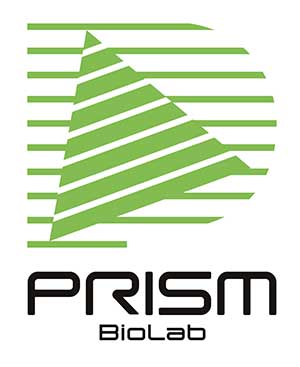Published on: November 6, 2025
Oral drugs diminish the stress of disease treatments. Oral bioavailability is governed by multiple parameters: membrane permeability, action of transporters, metabolism (notably the first pass effect) and so on. Cell permeability is a requisite physicochemical parameter for oral absorption. Recent advance towards the discovery of a molecular chameleon1) and innovation in analytical methods is providing us an opportunity for the identification of cell permeable, middle-sized molecules.2)
Oral absorption has been improved by two distinct approaches: chemical modification and absorption enhancers.
Chemical modification is the way to chemically design and modify the molecular structure so that the compound possesses better properties for oral bioavailability. It is thoroughly investigated during hit to lead and lead optimization stage, considering not only the membrane permeability but also the contribution of influx and efflux by transporters.
Absorption enhancer like SNAC and C8- and C10-fatty acids are investigated at the stages of the late lead optimization and IND. It supports passive absorption and widely used for peptide drug candidates.
Intense and extensive efforts are necessary for chemical modifications of a hit or a lead, and evaluation of the nature of a designed molecule needs to be assessed for rationalization as well as acceleration of drug candidate production.
Evaluation of chameleonic properties has been done by the analysis of partition coefficients (LogPoct v.s. Logtol)3), calculation of DPSA (TPSA* minus MPSA**)4), calculation of LPE (lipophilic permeability efficiency)5).
*TPSA: topological polar surface area
**MPSA: molecular polar surface area in nonpolar environments
In silico technologies are also applied for evaluation. Molecular dynamics for conformational simulation open up an opportunity of reliable prediction of macrocycle behavior.6),7)
Experimentally, EPSA (Experimental polar surface area) is applied to evaluate the permeability.8) EPSA works as a polarity descriptor, based on a SFC (supercritical fluid chromatography) profile analysis. EPSA is widely usable for the detection of intramolecular hydrogen bonding effect. As you can theoretically imagine, it is applicable for peptide molecules, where a hydrogen bonding plays a key role.9)
There is no need to mention that X-ray and NMR are playing a pivotal role for the elucidation of intramolecular hydrogen bonding as well.
Chamelogk is a recently disclosed for the automated chromatographic descriptor of “chameleonicity”.10) Chamelogk adopts reverse-phase high-pressure liquid chromatography (RP-HPLC) for the purpose of balancing usability, efficiency and data availability. Chamelogk is defined as experimental logk’100 minus extraporated logk’, where k’xxx stands for the capacity factor at the concentration of xxx% MeCN/water. Through the analysis of a set of various compounds, they defined the border of chameleons/nonchameleons as chamelogk = 0.6.
The potential and feasibility of chamelogk for a variety of chemical classes is not fully validated so far. But it could become one of the quantitative parameters for the evaluation of oral absorption.
It is still a challenge to rationally design an orally available drug even with experimental analyses and in silico predictions. An oral drug is a remedy for patients and medical personnel. We would always challenge the possibility for orally available candidate identification.
PepMetics® molecules does not have a hydrogen donor in its scaffold and oral absorption is not a terrible issue to overcome. We would like to endeavor for giving birth to orally available drugs to everyone.
For us, collaborators are necessary for drug development. When you would stick to the oral availability in drug discovery and development, it would be a great opportunity for both of us. We would appreciate it if you contact us for deep scientific discussions to move forward for drug creation.
1) https://doi.org/10.1038/s41570-023-00563-1
2) https://doi.org/10.3390/pharmaceutics16010047
3) https://doi.org/10.1021/jm301850m
4) https://doi.org/10.1016/j.drudis.2016.02.005
5) https://doi.org/10.1021/acs.jmedchem.8b01259
6) https://doi.org/10.1021/acs.jcim.2c01093
7) https://doi.org/10.1021/acs.jcim.9b00217
8) https://doi.org/10.1021/jm401859b
9) https://doi.org/10.1021/ml500239m
10) https://doi.org/10.1021/acs.jmedchem.3c00823

